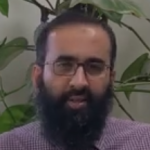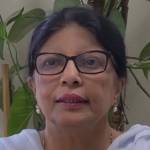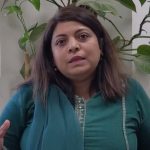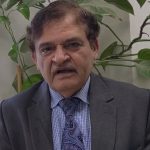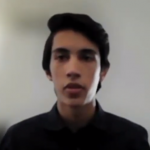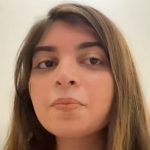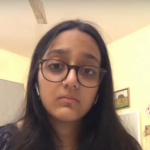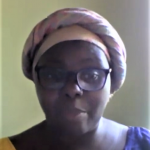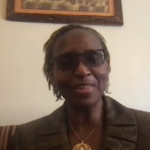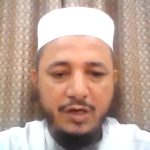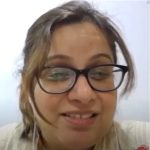I was excited to be on my way to Pakistan, but my family and colleagues were worried. Over a year ago, I was invited to teach in the Center of Biomedical Ethics and Culture (CBEC), SIUT in Karachi. I accepted the invitation immediately because I wanted to contribute to the Clinical Ethics Module for students enrolled in CBEC’s Postgraduate and MA in Bioethics programs, and because I wanted to learn from people in Pakistan. But now an anti-Islamic film trailer “Innocence of Muslims” had been posted on the Internet. Demonstrations were expected throughout the Muslim world.
In spite of the bad timing, everything about my visit went smoothly and safely. I had a great experience, and got to do what I wanted: to contribute to the programs and to learn a lot. I left Karachi with many deep impressions: the smell and taste of the food, the sights and sounds of the city, the sincerity of the people, the tradition of zakat (mandatory wealth tax on Muslims), the involvement of families in patient care, and the eagerness of the students to learn.
But what left the deepest impression on me were the ethical problems that concerned people face. My “students” at CBEC were medical doctors, clinical teachers, and hospital administrators in the middle of their careers. So I taught in a way that encouraged them to articulate ethical problems that arise in their lives. The work of articulating ethical problems in lived experience involves more than textbook ethics . It involves phenomenology, ethnology, politics, religious studies, patience, and skill. It also involves willing and disciplined students. With a little help from me, the students brought to light ethical problems that were intellectually interesting and vitally important. The problems were also disconcerting because they poignantly raised the question of what we should do, and they left me with the feeling that I was not doing enough. Here are a few problems that we discussed.
- Families and decisions. I quickly saw how involved families are in caring for patients and making medical decisions on their behalf. In discussions, a few students simply accepted the family as the legitimate source of all decisions for the patient. A few other students wanted to privilege the autonomous patient as the sole legitimate decision maker. But most of my students in Pakistan wanted to find ethical ways to live and work in the middle ground between these two positions. That made sense to me. People are deeply social, shaped and (to some extent) defined by a nexus of relationships. But that doesn’t mean that we need to uncritically accept the existing relationships and initial requests. For example, tradition may give the eldest son more voice and authority than can be ethically justified in a particular situation. The doctor may need to elicit and listen to other voices. In many cases, the ethical task is to avoid marginalizing people while recognizing the importance of the family.
- The duty to treat. Most students agreed that doctors have a duty to treat patients with infectious diseases. When people enter the medical profession, they tacitly agree to accept reasonable risks that are inherent in caring for patients. This view was not merely a theoretical conviction among my students. Many of them had experienced an occupational exposure. But when we pursued matters further, we came upon two problems. We weren’t sure how well the duty to treat holds up when health care professionals lack proper equipment and protection. The second problem focused on testing patients. In cases of occupational exposure, I think patients have a responsibility to be tested for the sake of the health care workers. But this view requires more discussion. The actual practices at Pakistani hospitals seem to have developed in different ways without adequate discussion.
- The responsibility to practice in Pakistan. I discussed with the students the migration of health care workers from low and middle-income countries to wealthier countries. This was not a theoretical matter for the students. Many of them had trained or worked abroad, and many of them could leave and practice elsewhere. After we discussed the support that society provides to medical education, most agreed that physicians have some responsibility to practice in Pakistan, at least for a reasonable period of time. But all of us wondered how best to balance this social responsibility with family responsibilities and personal concerns. My students in Pakistan were rightly concerned about their own safety and the safety of the families. Here are many ethical questions to explore. When do family responsibilities and personal concerns overcome social responsibilities? What should the medical profession do to address violence against physicians? When are physician strikes ethically justified?
- Responses to disasters. In the last decade, Pakistan has experienced a very serious earthquake and a number of severe floods. Many physicians have responded, individually and in groups, to help those affected. I deeply admire the values expressed by physicians’ immediate response, but work of this kind must involve many ethical issues. We need to examine the issues that arise in responding to disasters, but also issues that arise about preventing, preparing for, and recovering from disasters. Indeed, the first step is to “de-naturalize” disasters: To examine how and where human conduct and social structures contribute to the casualties and losses. Climate change and deforestation contribute to flooding; social structures make some people more vulnerable than others. Here is an area where bioethics, public health ethics, environmental ethics, and social ethics overlap.
I have sketched four of the twenty ethical problems that I came home thinking about. I hope that students and teachers in Pakistan will write case studies that bring to life some of these problems. Too many case studies in bioethics leave aside the social context. We need case studies that provide a better sense of the social context in which reflection and discussion take places. Too many case studies are thin and schematic descriptions that aim to illustrate a theoretical conflict. We need thick and detailed descriptions that require us to pick out what is morally salient, engage all our moral capacities, discuss the matter with others, and respond in better ways. Too many case studies are narrowly focused on particular clinical problems. We need case studies that also address broad social, environmental, and human concerns. Too many case studies limit our choices so that we must decide between two conflicting values. But in ethical life, we often need to find creative ways to reconcile conflicting concerns, and to find ways that reframe the whole problem.
The case studies that I imagine would contribute to bioethics in Pakistan. But they would do more than that. They would contribute to bioethics in the rest of the world.





